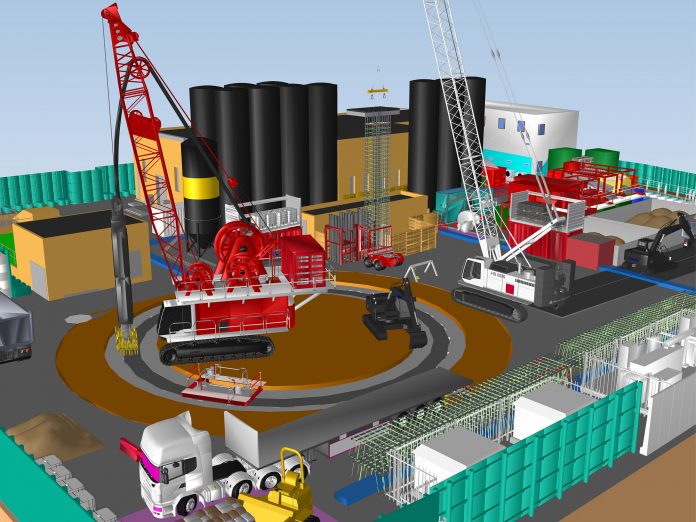4D construction planning has delivered £1m in savings on the eastern section of the Thames Tideway Tunnel, part of the UK’s largest-ever water infrastructure project
London relies on a sewer system built 150 years ago for a population of less than half its current size. As a result, millions of tonnes of raw sewage and rainwater is discharged into the River Thames every year.
The Thames Tideway Tunnel, to be completed in 2024, aims to prevent this overflow through the construction of a 25km “super sewer” that will protect the river, as well as surrounding communities and wildlife.
It is the largest infrastructure project ever undertaken by the UK’s water industry, involving 24 construction sites, 11 of which are located along the banks of the Thames, 12 design disciplines and numerous supply chain companies. Communicating and coordinating with all project stakeholders to organise construction successfully, particularly when schedules are tight and there are small, challenging project sites is vital.
Streamlining construction planning on Tideway
The Tideway project actively promotes innovation to challenge traditional ways of working and reduce complexity. The Costain, VINCI Construction Grands Projets and Bachy Soletanche joint venture (CVB), aims to push the boundaries of conventional construction to deliver value, right-first-time quality and sustainability while leaving a legacy that will benefit Londoners for more than a century.
The CVB JV employed Bentley’s SYNCHRO 4D to streamline construction planning activities and improve progress tracking and management. This new workflow combines 3D models with the construction schedule to produce a 4D plan that shows how the project will develop over time.
4D planning on Tideway
Implementing 4D collaborative planning enabled the Tideway construction teams to effectively manage highly congested sites with multiple, concurrent activities and different subcontractors who need to work together in tight confinement. Regular planning sessions among the various disciplines allowed the team to identify and resolve clashes and choose the optimum construction methodology, which reduced delays and field-change requests.
The construction planning sessions also involve value engineering activities that consider all design, environmental, health and safety, logistical, cost, and time constraints, and providing the client and specialist subcontractors with the opportunity to influence and improve early decision making.
For example, during a one-hour start-up meeting between CVB and Network Rail, the team discussed a number of key interactions relating to safety and major deliverables. To ensure an optimal solution was achieved, the team reviewed the site conditions at a number of key schedule milestones and took measurements on the 4D model to identify asset protection requirements and explore potential crane locations. As a result, the work schedule was revised to avoid unnecessary setup and relocation, compressing the time to complete this phase by 50%.
Modelling to engage the community
To date, the combination of 4D with lean construction methodology has reduced the overall construction programme by 30 days, achieving £1m in direct and indirect cost reductions. The 4D construction models have also been a particularly useful method to engage local residents, community groups and councils – individuals unfamiliar with interpreting traditional technical drawings and reports.
“Bentley’s 4D modelling application has resulted in considerable time and cost savings of more than £1m on Britain’s largest-ever water infrastructure project,” said Sandra Reis, BIM manager at Tideway.
“The technology shortened design time, reduced resource hours, made meetings more productive, and eliminated tedious tasks. The collaborative approach achieved through SYNCHRO 4D has been key to involving the client, designers and fabricators during early decision making.”
Thames Tideway Tunnel
Twitter: TidewayLondon
LinkedIn: Tideway London
Instagram: TidewayLondon












![[VIDEO] Heathrow’s third runway plan wins out over Arora London, United Kingdom – May 31, 2023: A commercial airliner taking off at London's Heathrow Airport, representing plans for a third runway](https://www.pbctoday.co.uk/news/wp-content/uploads/2025/11/iStock-2143084103-218x150.jpg)

